Nikon Nikkor AF-S DX 18-140 mm f/3.5-5.6G ED VR
3. Build quality and image stabilization
The next chart presents a comparison with other competitors. Neither the weight nor the physical dimensions of the Nikkor make it stick out in that group although it boasts the widest focal range and the highest number of elements among all. The Nikkor lags behind only when it comes to the minimum focusing distance – such a weak result is shared by the Sony but the Canon, The Sigma and the Pentax fare much better in that category.
In the photo below the tested lens is positioned between two 50 mm f/1.8 devices also produced by Nikon- the old AF and the new AF-S, sold in a package with the Nikon Df.
Please Support UsIf you enjoy our reviews and articles, and you want us to continue our work please, support our website by donating through PayPal. The funds are going to be used for paying our editorial team, renting servers, and equipping our testing studio; only that way we will be able to continue providing you interesting content for free. |
- - - - - - - - - - - - - - - - - - - - - - - - - - - - - - - - - - - - - - - - - - - - - - - -
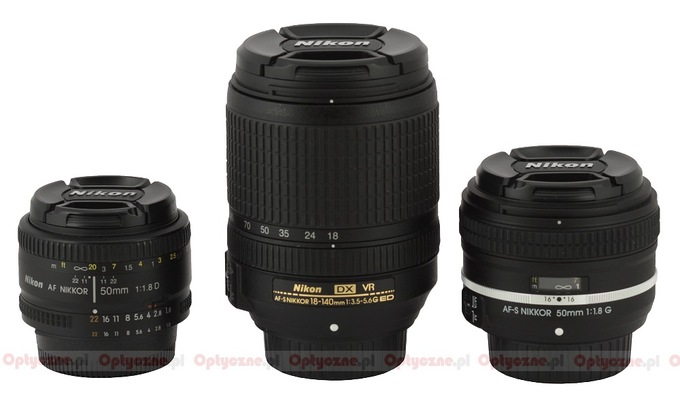 |
The tested lens starts with a metal mounting plate and contacts; the plate surrounds a rear element, 22 mm in diameter. The rear element is situated on the same level as the mount at 18 mm. When you pass to the maximum focal length the element hides more than 3 cm inside, revealing a nicely blackened interior of the tube.
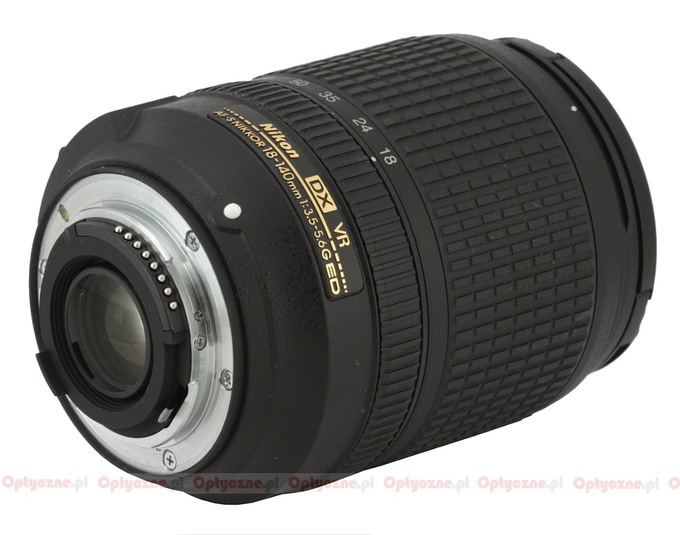 |
The proper casing of the lens is made of plastics; it starts with a white dot making the alignment with a camera easier. Above the dot there is a plate with golden inscriptions stating the name and the parameters of the lens. On its left side there are focusing mechanism mode slider (A and M) and another one which controls stabilization (VR ON and OFF). Nikon didn’t use here their standard “M/A” sign but you can still turn the focus ring in the A mode. On the opposite side of the plate there are inscriptions presenting technologies used in the lens (DX, SWM, VR, ED,IF, Aspherical), the working distance range, the size of the filter, the serial number and information that the lens was produced in Thailand.
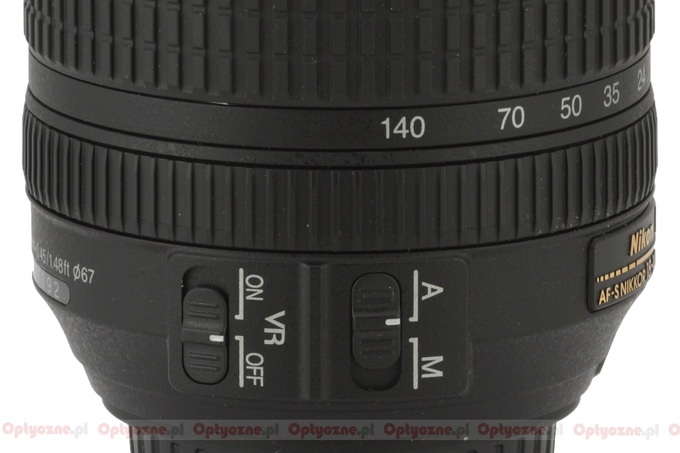 |
The manual focus ring is narrow - only 12 mm wide. It is covered by rubber ribs and moves with a bit of slack at the beginning. How big that slack really is it would be difficult to assess – the ring is devoid of any distance or depth of field scale. Running through the whole distance range needs a turn through more or less 120 degrees.
The rest of the lens casing consists of a big (as many as 5 cm wide) zoom ring covered by rubber ribbing; its trailing edge carries indicator marks for the 18, 24, 35, 50, 70 and 140 mm focal lengths. The ring moves smoothly and is well-damped across the whole range.
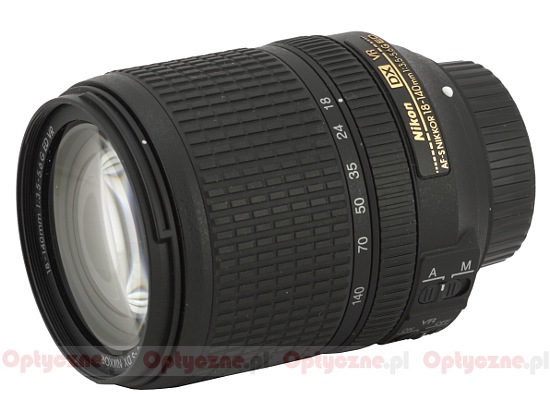 |
Behind the zoom ring there is only a small fragment of the casing with a hood thread which surrounds a non-rotating filter thread, 67 mm in diameter, and a front element, 56 mm in diameter. When you pass to the 140 mm the front element system retracts on a telescopic, two-element, plastic tube. Its stability is beyond reproach – it doesn’t bend, it doesn’t move sideways even if you apply a lot of pressure. By extending the tube you can make the lens longer by almost 5.5 cm.
The optical construction of the Nikkor AF-S DX 18–140 mm f/3.5–5.6G ED VR consists of as many as 17 elements positioned in 12 groups. One element is aspherical and another one was made of low dispersion ED glass. There is also an aperture with seven diaphragm blades which can be closed down to a value of f/22 at 18 mm and f/36 at 140 mm.
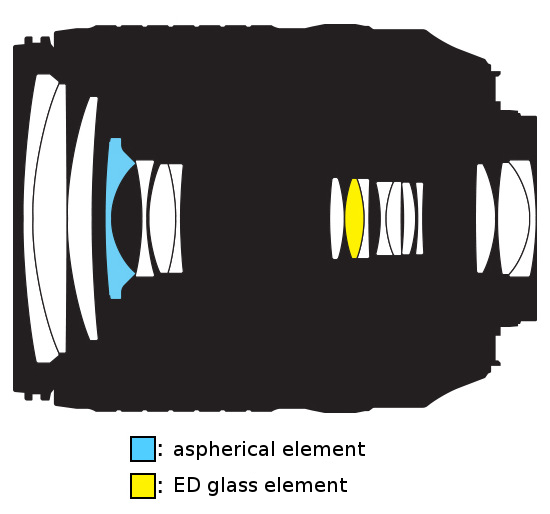 |
However if you counted that with a lens costing almost 600 $ you would get also a nice assortment of accessories you were, unfortunately, wrong. All you get are just the caps. It is especially strange that the Nikkor 18-105 mm VR, over two times cheaper, is still sold with a hood and a pouch.
Image stabilization
Most of producers, offering stabilized lenses, boast of an efficiency as good as 4 EV. However, many of them exaggerate because the real efficiency is often close to 3 EV. The Nikkor 18-140 mm VR is a nice exception to that rule because its stabilization efficiency is exactly 4 EV and a graph below is the proof of it.
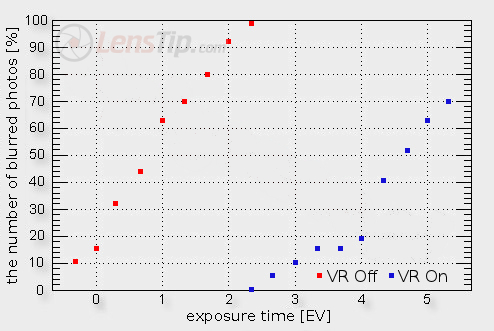
You see here the percentage of blurred photos taken for exposure times ranging from 1/160 to 1/3 of a second (and 0 EV is the equivalent of 1/125 of a second) with the stabilization switched off and on. It is clear that the maximum distance between both curves reaches 4 EV and so we assess the efficiency of the stabilizing mechanism of the tested Nikkor. A round of applause!






